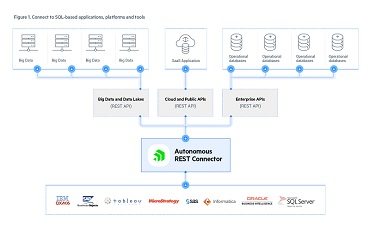Real-Time Access to XML Data
Get instant SQL connectivity from tabular- and hierarchical-formatted XML documents with a single connector
Easily integrate XML data with your application
Retrieve data from either a local file system, a web server, or a web service quickly and easily

Connect to XML via
ODBC
The Progress DataDirect Dedication to Security:
Progress DataDirect has defined a stringent set of policies and practices around product development and distribution. This ensures there is transparency with regard to third party dependencies, proactive policies, and practices to meet the highest security standards when releasing products. In addition, Progress DataDirect is dedicated to finding a timely and effective resolution to any serious security concerns that arise.
Features
SQL Support
SQL support to XML data and Web Services via ODBC
High-Performing
Quickly convert between XML and EDI/Flat-file data
Full Updates
Supports Inserts, Updates, and Deletes via SQL and XQuery
Robust Editing
Intuitive editing views and integrated troubleshooting utilities designed for ease of use









